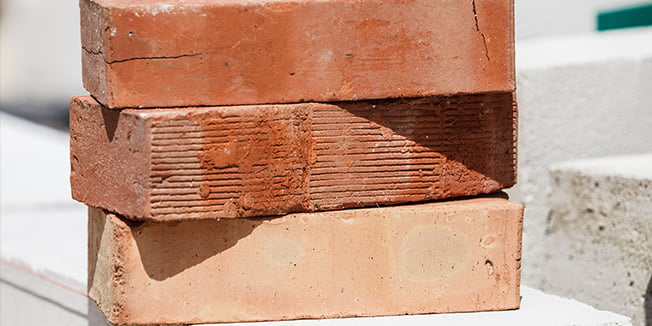Leanne Kemmer, Tax Consultant

 Real property owners and developers often consider the federal Historic Tax Credit (HTC) when evaluating whether to acquire and substantially rehabilitate historic buildings. Unfortunately, the Tax Cuts and Jobs Act (TCJA) repealed the 10% federal HTC and modified the 20% federal HTC. These changes, which are effective for taxable years beginning after 2017, will likely impact the acquisition and rehabilitation of historic buildings.
Real property owners and developers often consider the federal Historic Tax Credit (HTC) when evaluating whether to acquire and substantially rehabilitate historic buildings. Unfortunately, the Tax Cuts and Jobs Act (TCJA) repealed the 10% federal HTC and modified the 20% federal HTC. These changes, which are effective for taxable years beginning after 2017, will likely impact the acquisition and rehabilitation of historic buildings.
Repeal of the 10% HTC
Before the TCJA, taxpayers could claim a 10% federal HTC for expenditures paid or incurred to substantially rehabilitate non-certified pre-1936 buildings. Unfortunately, the TCJA repealed this provision.
Modified 20% HTC
Before the TCJA, taxpayers could claim a 20% federal HTC for expenditures paid or incurred to substantially rehabilitate a certified historic building. The 20% federal HTC continues, but the timing for claiming the federal HTC has changed.
Before the TCJA, the federal HTC was claimed for the taxable year in which the certified historic building was placed in service after substantial rehabilitation. A “certified historic building” means a building which is listed in the National Register of historic places, or is located in a registered historic district and certified to the Secretary of the Treasury by the Secretary of the Interior as being of historic significance to the district.
The TCJA modified the timing for claiming the 20% federal HTC. Under the new rules, the federal HTC is claimed ratably over a 5-year period beginning with the taxable year in which the certified historic building is placed in service after substantial rehabilitation. This change impacts the overall return on investment for the rehabilitation of certified historic buildings.
In addition, excess federal HTCs generated for the taxable year in which the certified historic building is placed in service after substantial rehabilitation will diminish. Excess federal HTC’s means HTC’s exceeding federal income tax liability for the taxable year in which claimed. Such excess HTC’s may be carried back to the immediately preceding taxable year by filing a carry back claim resulting in a refund of federal income taxes paid in the preceding tax year. However, under the new rules, the ability to generate excess HTCs will diminish.
Listen to a podcast from Freed Maxick Tax Director Don Warrant on how the Historic Tax Credit can generate 40% cash reimbursement for property owners.
Transition Rule
The TCJA provides a transition rule whereby the changes made by the TCJA do not apply to expenditures paid or incurred by the end of the taxable year in which the 24-month period, or 60-month period, ends when the following two conditions are met:
- The building was owned or leased during the entirety of the period after December 31, 2017, and
- The date of the beginning of the 24-month or 60-month period is no later than June 20, 2018.
The 24-month period and the 60-month period are in reference to the period over which the certified historic building must be substantially rehabilitated.
Under this transition rule, all expenditures should be paid or incurred by the end of the taxable year in which the 24-month or 60-month periods end.
Tax Basis Reduction Rules
The TCJA did not affect the rule that requires the tax basis of the certified historic building to be reduced by the amount of the HTC claimed. Generally, tax basis reduction rules don’t apply when federal tax credits are claimed over multiple tax years. Fortunately, a bipartisan group of House and Senate lawmakers introduced legislation that would eliminate the rule that requires the tax basis of the certified historic building to be reduced by the amount of the HTC claimed. However, no further action has been taken on this legislation as of the time of this writing.
State Impact
States that follow the federal HTC rules may adopt the changes made by the TCJA or decouple from those changes.
For example, New York State provides a refundable HTC equal to the amount of the federal HTC. However, New York State has decoupled from the changes made by the TCJA. Therefore, taxpayers can continue to claim the 20% New York State HTC for the taxable year in which the certified historic building is placed in service after substantial rehabilitation.
For Further Clarification and a Discussion of Your Situation
The Freed Maxick Tax Team has significant experience when it comes to helping real property owners and developers qualify for and claim historic tax credits as well as other Federal and state tax credits. With an ever-changing tax landscape, our team is prepared to assist real property owners and developers to minimize their income tax liabilities using the various tax credit and incentive programs, and other tax minimization strategies.
 For more information on how the changes made by the TCJA might impact your historic rehabilitation project, or to discuss other changes made by the TCJA, please call us at 716.847.2651 or contact us here.
For more information on how the changes made by the TCJA might impact your historic rehabilitation project, or to discuss other changes made by the TCJA, please call us at 716.847.2651 or contact us here.